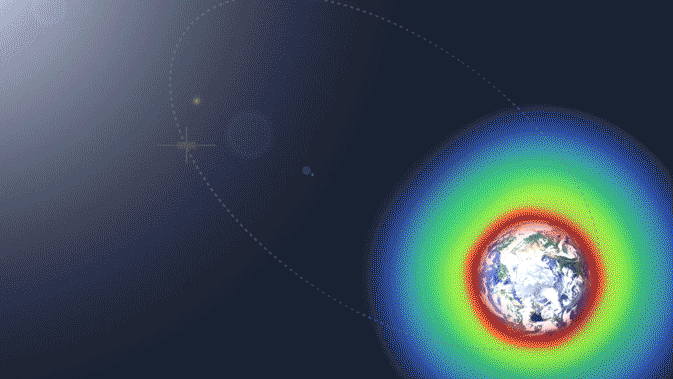Nasa Discovers How Particle Barrier Protects Earth From 'Monster' Space Weather

Nasa scientists have revealed how in certain circumstances a pool of dense particles which circle Earth can extend out to form a barrier against incoming solar material.
Within the gigantic system which connects Earth to the sun, solar material streams towards earth and the magnetic bubble around the planet. The particles, deep inside the Earth's magnetosphere, stretch out a "long arm" to protect from the flying debris.
However, astronomers have revealed the parameters change, as the particles streaming in could be from the constant solar wind, or from a giant cloud erupting off the sun in a coronal mass ejection (CME). Sometimes the magnetosphere blacks almost all the material, while at other times it allows material in.
In the most recent research, scientists have deciphered exactly what the circumstances change the parameters, which protect Earth and orbiting spacecraft from the effects of such space weather.

Brian Walsh, a space scientist at Nasa's Goddard Space Flight Center, said: "It's like what you might do if a monster tried to break into your house. You'd stack furniture up against the front door, and that's close to what the Earth is doing here."
He added: "The material that is usually much nearer Earth stacks up against the outer boundary of the magnetosphere, throttling the interaction there and stopping solar material from entering."
In the latest March issue of Science Express, Walsh and his colleagues compared observations from the ground and in space during a solar storm which occurred in January 2013. The storm was fairly moderate, caused by a CME impacting Earth's magnetosphere for several hours.
As the CME entered the boundary of the magnetosphere, its magnetic fields and those around Earth realigned in a process called magnetic reconnection. This process allowed energy and solar material to cross the boundary into the magnetosphere.
Three Nasa THEMIS (Time History of Events and Macroscale Interactions during Substorms) spacecraft managed to capture this interaction.
Scientists were also able to study the sphere of cold dense gas at the top of our atmosphere. This region, called plasmasphere, consists of a gas made of charged particles known as plasma. GPS signals travel through the plasmasphere at different speeds, depending on the thickness of the substance. By tracking the GPS radio signals, researchers were able to identify the properties of the plasmasphere.
Walsh said: "A colleague who works with these kind of observations said I had to see some interesting data showing a plume from the ground. And I typed in the dates and saw that it was a date when THEMIS was in the right position. So, for the first time, we could make a comparison."
THEMIS observations showed that the plasmasphere material, which stretched all the way up to the magnetic reconnection point where the CME had made contact with the magnetopause, had a dramatic impact on the characteristics of the magnetic reconnection region.
David Sibeck, the project scientist for THEMIS at Nasa Goddard, said the magnetic reconnection needed to be longer than a few minutes for the research to work. He explained: "But if it lasts long enough, the whole magnetosphere gets involved. This tongue of the plasmasphere surges out, adding another layer of protection, curbing the magnetic reconnection."
These observations could lead to improvements in space weather predictions, which would be as useful for both spacecraft operators and terrestrial weather forecasts on Earth.
© Copyright IBTimes 2025. All rights reserved.






















